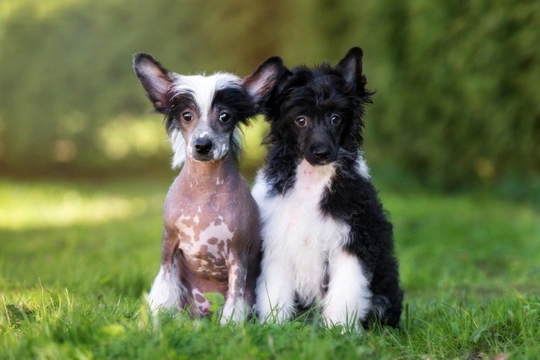
10 things you need to know about the Chinese Crested dog before you buy one
The Chinese crested is a very distinctive looking dog, which most people find quite unusual when they first see them – because this is a breed within which a good proportion of the members are hairless.
Whilst not everyone appreciates the Chinese Crested appearance and the first time you pet a dog of this type can be quite the sensory shock, this is a very sweet breed with a lot to recommend it, and one that has a high degree of appeal to all manner of different types of owners.
Chinese Crested dogs are quite complex in terms of their care requirements given their physical traits, and there is a lot to think about if you want to share your home with a dog of this type. Whilst Chinese crested ownership can be very rewarding, this is not the right breed for everyone – and if you are thinking of buying a dog of this type, you need to ensure you know what you’re getting into before you go ahead with a purchase.
With this in mind, this article will tell you 10 things you need to know about the Chinese crested, before you go out and buy one. Read on to learn more.
Chinese Crested dogs aren’t always hairless
First of all, we think of the Chinese Crested as being a hairless dog breed, but there are actually two variants within the breed – hairless and powder puff respectively, with powder puff having a long, flowing coat that is silky and soft to the touch.
Even hairless variants have some hair!
The hairless Chinese Crested dog isn’t even completely hairless itself, and the amount of hair any given dog displays can vary. They all have tufts of fur on the paws and a plume of hair on their heads, and some also have a beard, and sparse or very fine hair on the body if you look closely too, in some cases.
There is no way to guarantee hairless pups in a litter
Chinese Crested litters usually contain a mixture of powder puff and hairless pups, and there is no genetic formula or mating match that can ensure a litter produces only hairless pups. Two powder puff parents cannot produce hairless offspring, and the genetics of the hairless variant means that embryos that inherit two copies of it are not carried to term – and so breeding only hairless pups is not possible.
This means it is something of a lottery for the breeder every time a litter comes along in terms of what combination of pups will be present!
Hairless Chinese Crested dogs need quite a lot of skincare
The skin of the hairless Chinese Crested has a texture much like human skin, and many of the same concerns! Dogs of the breed can be prone to dry skin, oily skin, acne, and any number of other issues, and caring for their skin and keeping it clear of congestion, appropriately moisturised and generally in good condition is part of the routine of ownership.
Many people mistakenly assume that a hairless dog will need no skin and coat maintenance, but the opposite is the case!
Chinese Crested dogs are vulnerable to sunburn
Hairless Chinese Crested dogs are vulnerable to sunburn in the same way as humans are as a result of their hairlessness, and so they need to be carefully protected from the sun in order to avoid sunburn, and in the future, an increased risk of skin cancer.
Keeping a Chinese Crested warm enough can be a challenge
The Chinese Crested needs a consistent temperature and they very much feel the cold, which means they need a full winter wardrobe for walks and may need jumpers and clothing in the home too, particularly if your heating goes off at night or your home is particularly cold.
The breed tends to be quite long lived
The Chinese Crested is a petite and finely built dog, but they actually tend to be quite a long-lived breed, when given the appropriate diet and care. Dogs of the breed average 12-14 years of age, and some much older!
…But it does face some hereditary health challenges
That said, the Chinese Crested breed is one that has a number of hereditary health challenges in play, including a range of eye defects, patellar luxation, and a propensity to unusual and sometimes problematic dentition.
Any prospective Chinese Crested buyer needs to find out about the breed line’s health in detail before committing to a purchase.
They’re small enough to live comfortably in most types of homes
The Chinese Crested is petite and finely built, and this means that they are well suited to living in a wide range of different types of homes, even very small ones and those in urban areas. They don’t need a huge amount of space, but do need to live somewhere with suitable areas to go for walks nearby.
Chinese Crested dogs can be a good choice for first time owners
The Chinese Crested can be a good pick for first time owners, and they have sweet natures, aren’t hugely challenging to exercise, and work hard to please. However, any prospective buyer needs to ensure that they understand how to care for the skin of hairless variants and the importance of keeping the dog warm and protected from the sun, as this can be quite onerous and is not a good fit for everyone.



